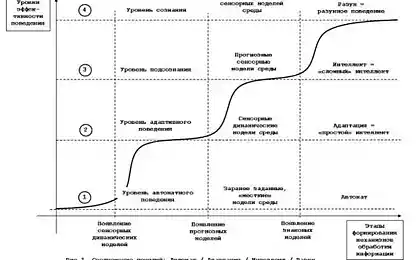205
How Perfect Moment Syndrome Can Ruin Your Life

Perfect Moment Syndrome makes us wait for the perfect and then face disappointment. And it can significantly poison life.
Have you ever put off an important decision because the moment seemed “wrong”? Or didn’t you start your dream project expecting “perfect conditions”? Each of us has at least once fallen into the trap of waiting for the perfect moment – a psychological trap that promises us security, but steals our time and opportunities.
Anatomy of Perfect Moment Syndrome
Ideal Moment Syndrome is a psychological pattern in which a person systematically postpones actions or decisions while waiting for “perfect” conditions to occur. This behavior is deeply rooted in our thinking and has evolutionary roots related to risk avoidance. Our brains are programmed to seek maximum benefit with minimal energy and risk — a strategy that was useful for the survival of our ancestors but has become dysfunctional in today’s world of limitless possibilities and choices.
According to research by neuropsychologists, when making decisions under conditions of uncertainty, the amygdala is activated - the area of the brain responsible for the fight or flight response. Activation of this structure causes anxiety and a desire to postpone the decision until the “more appropriate moment” when the level of uncertainty decreases.

Neuropsychological basis of the perfect moment syndrome: activation of the amygdala in decision-making under conditions of uncertainty.
Signs of Perfect Moment Syndrome
- Regularly postponing important decisions until better times
- Infinite Preparation without Action
- Excessive planning instead of implementation
- Frequently worrying that “the time has not yet come”
- Feeling like waiting for a special sign or inspiration
- Fear of an imperfect outcome
- Constantly comparing your situation to the ideal scenario
Why do we fall into this trap?
Perfect Moment Syndrome is powered by several psychological mechanisms operating simultaneously. Understanding these mechanisms is the first step to getting rid of their influence.
Fear of uncertainty
Acceptance of uncertainty is a powerful factor that causes us to postpone action. The brain perceives the unknown as a potential threat and seeks to avoid situations with uncertain outcomes. Waiting for the “perfect moment” creates the illusion of control and reduces anxiety associated with uncertainty.
“The human mind cannot tolerate uncertainty. He will prefer a beautiful lie to an uncomfortable unknown. – Daniel Kahneman, Nobel Prize winner in economics
Perfectionism and Fear of Failure
Perfectionism is the true companion of the perfect moment syndrome. Demanding a flawless result creates an insurmountable barrier to action. Fear of making a mistake or getting a result below the expected paralyzes the will and makes you wait for the conditions that guarantee success. But such conditions exist only in our imagination.
Cognitive distortions
Our thinking is full of cognitive biases that support perfect moment syndrome:
- Catastrophe Exaggerate the negative consequences of an imperfect solution
- Dichotomous thinking Perception of the situation as “ideal” or “catastrophic” without intermediate gradations
- Overgeneralization Perceiving one failure as evidence of complete incompetence
- The illusion of control Exaggerated idea of the ability to control all factors of the situation
The toxic effects of waiting for the perfect moment
Perfect Moment Syndrome destroys our lives in many ways, often invisible in the short term but catastrophic in the long run.
The price of missed opportunities
Perhaps the worst consequence of perfect moment syndrome is missed opportunities. While we wait for ideal conditions, real chances pass by. Studies show that most successful people achieved results not by waiting for the perfect moment, but through numerous attempts, mistakes and course adjustments.
According to Stanford University psychologists, people prone to perfect-moment syndrome miss out on up to 70 percent of potentially lucrative opportunities in their lives, constantly postponing decisions “until better times.”
Chronic dissatisfaction
Perfect moment syndrome creates a permanent gap between reality and ideal. We are always dissatisfied with the present, because it does not correspond to our idea of the “ideal moment”. This leads to chronic dissatisfaction that poisons even the most joyful moments of life. We lose the ability to enjoy what is, constantly striving for an unattainable ideal.
Psychological exhaustion
Constantly waiting for the perfect moment drains psychological resources. The constant internal struggle between the desire to act and the fear of imperfection creates a cognitive dissonance that exhausts the nervous system and leads to emotional burnout.

Freeing yourself from the perfect moment syndrome is a path to a fulfilling life filled with real actions and accomplishments.
How to Overcome the Perfect Moment Syndrome: Practical Strategies
Liberation from the perfect moment syndrome is not a one-time action, but a process of restructuring thinking and habits. Here are effective strategies to help you get started.
1. Microaction practices
Big tasks paralyze the will and increase the perfect moment syndrome. Break down your goals into micro-actions—steps so small that they don’t cause resistance or fear. Each successful micro-action creates positive reinforcement and helps to overcome the inertia of expectation.
Example of micro-actions to start a fitness program:
- Day 1: Wear sportswear and stand for 5 minutes in an exercise-ready position
- Day 2: Perform 1 minute of any physical activity
- Day 3: Perform 2 minutes of any physical activity
2. The "good enough solution" method
Psychotherapist Donald Winnicott introduced the concept of a “good enough mother” that can be applied to decision-making. Instead of aiming for the perfect solution, focus on finding a “good enough” option. Studies show that people who make “good enough” decisions end up more successful and happier than those who constantly put off making decisions in search of the perfect option.
3. Time-limitation method
Set a tight time frame for making decisions. For example, the “5 minutes” rule – if a task takes less than 5 minutes, do it immediately without delay. For more complex decisions, use a timer: “I have 24 hours to make this decision, then I act on the best available options.”
“The fear of making the wrong decision often leads to no decision, which in itself is the worst decision.” - Tony Robbins.
4. Diary of missed opportunities
Keep a diary that records situations where you’ve postponed an action because you’re waiting for the perfect moment. After a month, go back to these records and analyze what happened as a result of inaction. This practice demonstrates the real cost of perfect moment syndrome and motivates change.
5. The "anti-prediction" technique
Instead of trying to predict the ideal moment in the future, practice “anti-prediction” – the conscious rejection of predictions in favor of experimentation. Ask yourself, “What happens if I start right now despite the imperfect conditions?” Often, reality is far more favorable than our catastrophic predictions.
6. The principle of iterative improvement
Embrace the iterative improvement philosophy popular in the software development world. According to this approach, it is better to release an imperfect product and gradually improve it than endlessly refine it to perfection before launching. Apply this principle to your projects and solutions:
- Version 1.0: Make a minimum viable option
- Version 1.1: Gather feedback and make improvements
- Version 1.2: Continue the cycle of improvement
Overcoming the Perfect Moment Syndrome opens the way to a fuller, richer, and more productive life. It is important to remember that this is not a one-time achievement, but a continuous practice of new patterns of thinking and behavior.
Start acting now.
Glossary of terms
Ideal Moment Syndrome is a psychological pattern in which a person systematically postpones actions or decisions, waiting for the onset of “ideal” conditions that exist only in their imagination.
Cognitive biases are systematic errors in thinking that affect the decisions and judgments we make. These deviations from rationality occur unconsciously and can lead to irrational behavior.
Perfectionism is the desire for perfection, combined with high standards of performance and a tendency to critical self-esteem. Pathological perfectionism can paralyze a person’s ability to act.
The amygdala is a paired structure in the brain that is part of the limbic system and plays a key role in the formation of emotions, especially fear and anxiety.
Catastrophization is a cognitive distortion in which a person is inclined to imagine the worst possible outcome of a situation and exaggerate the negative consequences.
Dichotomous thinking is the tendency to perceive situations in black and white, without intermediate gradations. It is also known as “all or nothing” thinking.
Iterative improvement is a method of gradually improving a product or process through a sequence of development, testing, and improvement cycles based on feedback.
© 2025 bashny.net. All rights reserved.
When it’s time to change jobs: Key signals of professional deadlock
The paradox of transformation: Why “become first, then get” is the key to success























